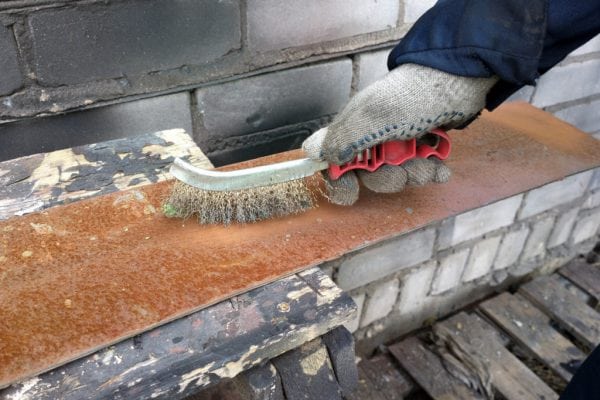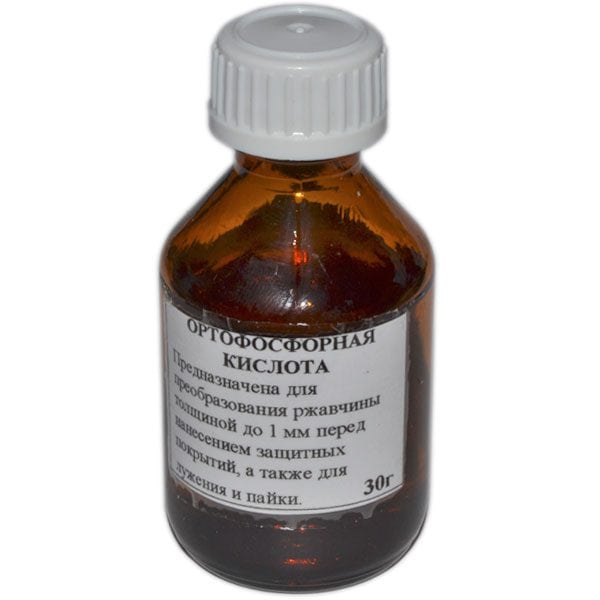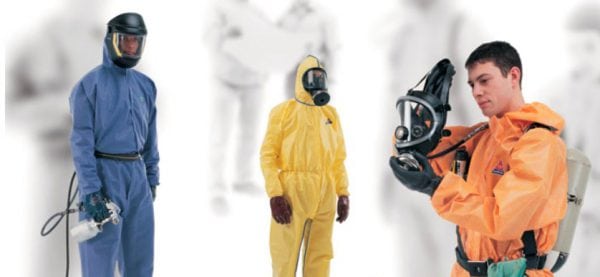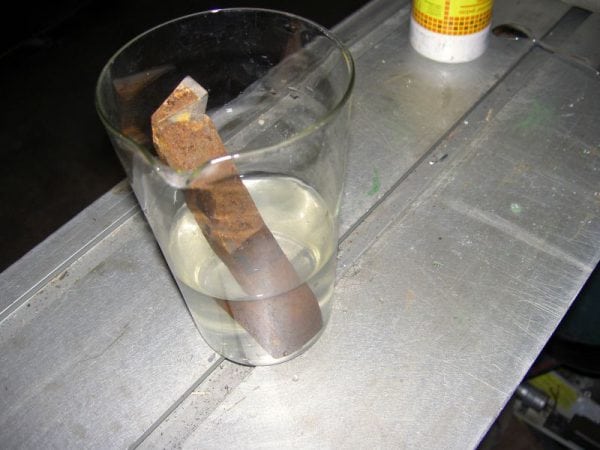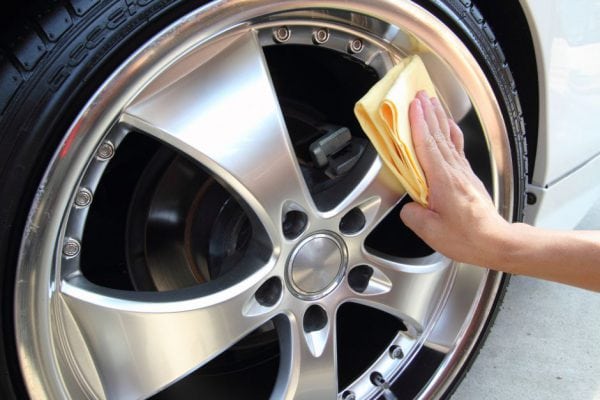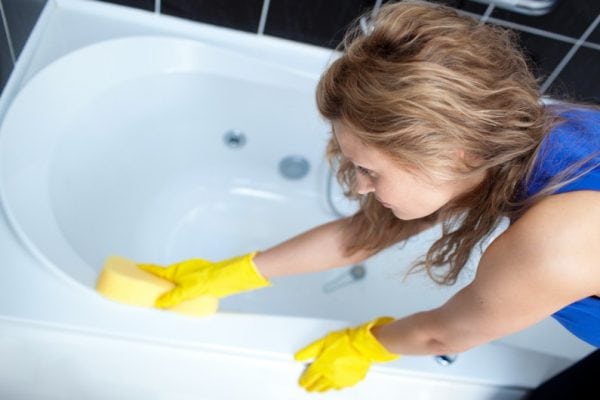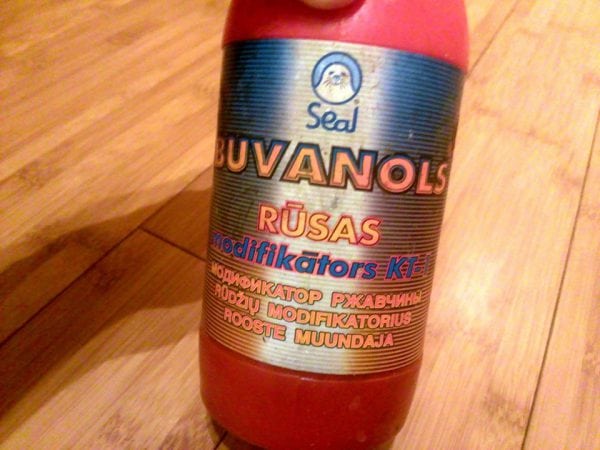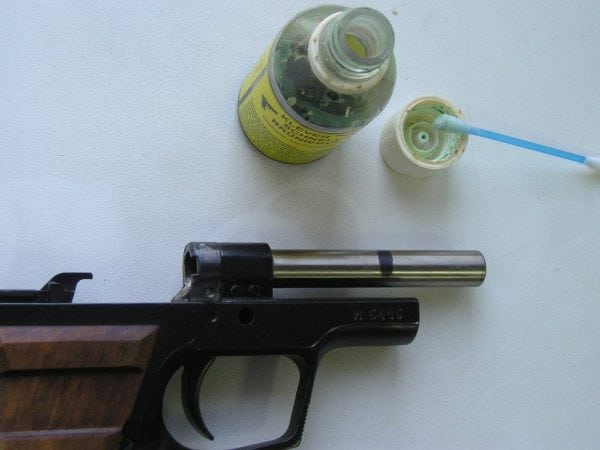The most dangerous enemy of the metal is corrosion, which occurs as a result of the interaction of oxygen and carbon dioxide with water. One way to combat rust is to treat the metal surface with phosphoric acid.
- What is phosphoric acid?
- Acid Safety
- Rust removal
- Dip etching
- Surface Acid
- Removing rust from plumbing fixtures
- Rust converter
- Rules for the transportation of phosphoric acid
- Rust Prevention Tips
- Phosphoric Burnishing
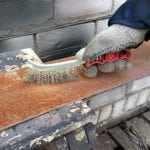
What is phosphoric acid?
Phosphoric acid is a product of an inorganic water-soluble type. It is produced in the form of an 85% aqueous solution. The substance resembles syrup in appearance and has no color.
Phosphoric acid not only removes loose oxides, but also forms a grayish protective film of oily consistency. The protection mechanism consists in the formation of a phosphated surface after the acid has corroded the iron oxide.
Phosphoric acid has a wide variety of uses. However, if we talk about protecting surfaces from corrosive processes, the scope of the acid is also wide: from processing technological equipment to protecting automobile parts. Phosphoric acid is part of primers for metal, as well as rust converters. Moreover, in the latter case, the acid acts as the base element.
Advantages of phosphoric acid:
- It removes rust deposits on the metal surface, as well as on enamel and earthenware products.
- Rust removal is done delicately, without damaging the surface (for example, acid does not damage the enamel).
- A protective film appears on the metal surface, which prevents the development of corrosion processes and mechanical damage.
- In addition to the protective functions, the cleansing qualities of phosphoric acid are known - it is used to remove plaque and dirt from all kinds of plumbing.
Acid Safety
Phosphoric acid is classified as hazardous chemicals. As a result of the contact of this substance with the skin, painful burns are possible. The substance also releases harmful fumes, which are dangerous for the respiratory tract.
Based on the foregoing, transportation, storage and handling of this material requires compliance with certain safety standards. Phosphoric acid can only be used in protective clothing, gloves and a respirator.
In case of unwanted contact of the substance with the skin, the following steps must be performed:
- First of all, you need to remove clothing that has been spilled with harmful liquid.
- Next, wash the affected area of the skin with a significant amount of water. Best if it is running water. The approximate duration of washing is 15-20 minutes.
- In no case should you rub the liquid over the skin. The substance should not be wiped with napkins or a towel, namely, rinse off.
- Sometimes a single wash does not help. In this case, you need to extend the procedure for another 15-20 minutes. The same is recommended if the burning sensation repeats after some time.
- Before the doctor arrives, it is recommended to apply a free (non-constricting) gauze bandage to the affected area.
- If the pain is too worrying, you can drink an anesthetic (for example, analgin).
So, all work with phosphoric acid must be carried out with the utmost care and attention. If the incident nevertheless occurred, then after providing primary care, the victim should immediately consult a doctor.
to contents ↑Rust removal
Based on the degree of the corrosion process and the size of the product being cleaned, the method of rust removal is selected:
- etching with immersion in a solution;
- single or multiple treatment of the part with phosphoric acid (roller or from a spray);
- metal processing with preliminary mechanical cleaning.
Dip etching
For etching, you will need a lot of acid and a container corresponding to the dimensions of the part. It is best to carry out full immersion etching.
Work execution order:
- degrease the part using any household chemical product;
- thoroughly rinse the product in running water;
- we fill the container with a solution in the following proportion: 100-150 grams of acid per liter of water;
- immerse the product in a container and leave it for an hour, not forgetting to periodically stir the solution;
- we take out and wash the part;
- we prepare a solution-neutralizer with the following ratio of components: 50% water, 48% alcohol, 2% ammonia;
- we wash the product with an alcohol solution, and then with running water;
- we dry the part in any way (for example, convection).
It is important to follow the sequence of operations, as they are interconnected. For example, without degreasing, the etching will turn out uneven. If after processing it is not good to dry the part, hydroxide will appear on it, which is extremely undesirable.
to contents ↑Surface Acid
If the product is large, there is no suitable container under it, or the powder supply is not too large, you can treat the surface with a spray bottle, roller or brush. Before processing the part, it is necessary to carry out preparatory work: remove the rust, clean and degrease the part.
The degree of corrosion process must be taken into account. If there is too much rust, you may have to use a grinder with a nozzle in the form of a metal brush or a petal circle. However, rust should be removed carefully so that no holes form if the metal is too thin. Abrasives with too large grains must be avoided.
Phosphoric acid is a powerful tool, so if you do not take care, you can damage the decorative layer.
Before applying the composition, it is necessary to clean the surface with a brush, and then degrease the material with a detergent composition. After degreasing, the surface is washed with water and dried well. Then you can apply acid.
After a couple of hours after surface treatment, the acid is washed off using an alcohol solution-neutralizer, the recipe of which is indicated above. Then the surface is washed with water and dried.
Advice! In the acid composition, you can add a moderating substance (inhibitor) called "Catapine". This drug reduces the reaction rate with non-oxidized metal. 1-2 grams of Katapina is added per liter of water.
to contents ↑Removing rust from plumbing fixtures
Phosphoric acid is also used as a means of household chemicals. With the help of this substance, traces of rust are easily removed in places of regular water flow in the toilets and enameled bathtubs.
Note! Phosphoric acid is not applicable to acrylic bathtubs.
Instructions for removing rust from faience and enamel products:
- degrease the surface with any detergent;
- we clean the surface with a brush with natural pile;
- mix 100 grams of 85% composition with 500 milliliters of water;
- apply the solution to the surface;
- after a certain time (from 2 to 12 hours, depending on the amount of oxides), wash off the composition with a soda solution (liter of water per tablespoon of soda).
A feature of this cleaning method is that there is no need for rubbing movements that could lead to damage to the enameled surface.
Interesting information! Some housewives use Coca-Cola to remove rust deposits. The secret of the cleaning effect of the drink is that it contains a small amount of phosphoric acid. However, the effectiveness of this method is still insufficient, therefore, it is more correct to use a composition with 85% concentration.
to contents ↑Rust converter
Rust modifier is the same phosphoric acid solution, but with special additives. There are several types of converters:
- primers;
- stabilizers;
- converters.
As an example of primers, the composition “EVA-0112”, which includes a base and 85% phosphoric acid, can be given. The composition is used for priming steel surfaces for painting.
The converter under the brand name "Zincar" contains acid, as well as zinc and manganese salts. As a result of the conversion of rust, the alloying effect is transmitted to the metal and a protective layer forms on its surface.
to contents ↑Note! It is recommended to use the converter only after reading the instructions.
Rules for the transportation of phosphoric acid
Phosphoric acid is an aggressive substance, so the powder must be placed in an isolated container. It is important to prevent foreign substances from entering the acid. Containers for storage and transportation of the substance must be dry and clean. Only by observing these requirements can a solution of the proper quality be obtained. If the composition turns out to be of poor quality, there is a high probability of the emission of harmful fumes. In addition, using a low-quality solution will not work to protect the metal.
Store containers with powder in a warm and dry place. Damp places where condensation is likely to be avoided. It is not recommended to pour the powder into another container, it is advisable to store it in its original packaging. Since the cargo is a hazardous substance, accompanying documentation will be required to transport it over considerable distances.
to contents ↑Rust Prevention Tips
When choosing a tool for removing traces of corrosion, you need to proceed from the situation. If you plan to clean the surfaces by immersion, you will need a lot of acid. In this case, it is recommended to purchase 85% phosphoric acid. If there is a need not only to remove rust, but also to create a protective film for the paint, then you can’t make a solution with your own hands. In this situation, it is more correct to purchase a factory-made converter, which contains all the necessary additives.
In addition, you need to know if surface priming is planned. Modifier converters improve the inhibitory and hydrophobic qualities of the primer, but still do not apply to primers. In such cases, priming converters will help, after processing, with which the paintwork can be applied to the surface.
to contents ↑Phosphoric Burnishing
Burnishing, i.e. Obtaining iron oxides on a steel surface can be carried out using the Parker method.
Instruction:
- We take a 60-85% acid solution and put steel filings in it for 2 weeks. The container must be carefully corked.
- We clean and degrease items subject to oxidation.
- We put the product in a seasoned solution and boil the liquid for 30-45 minutes. Depending on the metal grade, the surface will turn gray or matte black.
Note! Do not keep the product in boiling water for too long, otherwise it may corrode the oxidized surface.
In conclusion, I would like to recall that phosphoric acid is an intermediate solution. If you leave the coating unpainted, sooner or later the metal will corrode.

